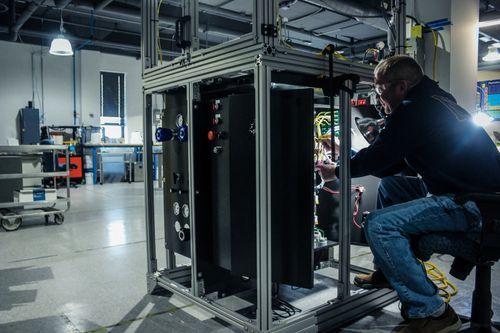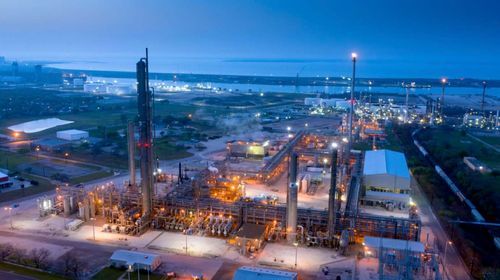GoSolar, a large-scale green ammonia and renewable energy developer, has an approximately 5.5 GW pipeline of projects in the Midwest, and is seeking co-financing to develop the projects or buyers that would assume control.
The two large-scale projects that are the most advanced are in Iowa and Missouri, and both consist of one part that is off-grid DC power for hydrogen and ammonia production, and another part that is grid-connected for local energy needs but which can also produce hydrogen, Gordon Baier, the firm’s co-owner and CEO, said in an interview.
The company conducted a year-long analysis of potential locations before settling on sites that were near expected coal-plant retirements, ammonia pipelines, water access, and offtake markets, he said. The Iowa and Missouri projects are located near the NuStar Energy ammonia pipeline, which opens up wider market access.
Baier, a native of Germany who has developed over 100 renewable energy projects, said that offtakers as well as potential financing partners or acquirers for the projects could be nearby fertilizer plants and their owners: Koch Industries, the owners of Iowa Fertilizer Company; CF Industries; and BASF.
GoSolar has not engaged a financial advisor. It is using Hodgson Russ as legal counsel.
An ideal partner would be a long-term owner and operator that would contract with GoSolar under a development services agreement. “Or it could be an EPC who wants to flip it later to whomever puts the highest price on the table. At this point we are open and flexible,” Baier said.
The Iowa project in Lee County consists of a planned off-grid 1,850 MW DC PV solar plant to DC buffer storage and 370 MW DC hydrogen electrolyzer capacity, producing 340,500 metric tons of certified green ammonia per year. The project also has a separate grid-connected section with 207 MW DC PV solar and 207 MW BESS planned.
To the south, in Marion County, Missouri, GoSolar has planned a 3,700 MW+ DC solar plant, also off grid, with BESS storage and 750 MW of electrolysis, with production of 675,000 tons per year of green ammonia. In addition, a grid connected portion of the Missouri project would have 500 MW+ DC PV solar, 500 MW+ BESS, and 100 MW of hydrogen production.
The projects can scale further in phase 2, to around 10 GW of total renewable capacity, Baier noted. GoSolar is in discussions with thyssenkrupp Nucera and thyssenkrupp Uhde to provide electrolyer and ammonia production technologies, respectively.
The DC-to-DC-to-DC aspect of the projects mean the project is 20% more efficient, as they are not incurring losses on DC/AC conversion, Baier said. “And that is a big boost to make this very, very viable,” he said, adding that the project is being evaluated by RMI and that he hopes to showcase project feasibility in the next few weeks.
Additionally, the DC electricity is off grid and therefore qualifies under 45V requirements for clean hydrogen without interfering with the grid, he added.
Meanwhile, GoSolar set up the non-DC portions of its projects following a one-to-one ratio for solar PV and BESS in order to sell an attractive resource profile into the electricity supply market.
“The main reason behind that is to have a long duration and full capacity to buffer eventually all of the solar into the battery so that you are not being curtailed on the other end,” he said. “That’s exactly what the utilities are looking for: to have sufficient energy on hold for a demand response in peak, or as a long-duration load to the grid to simulate their shutting down coal power plants or potentially shutting down their nuclear plants.”






